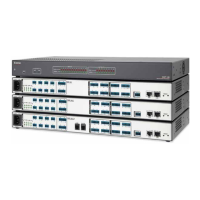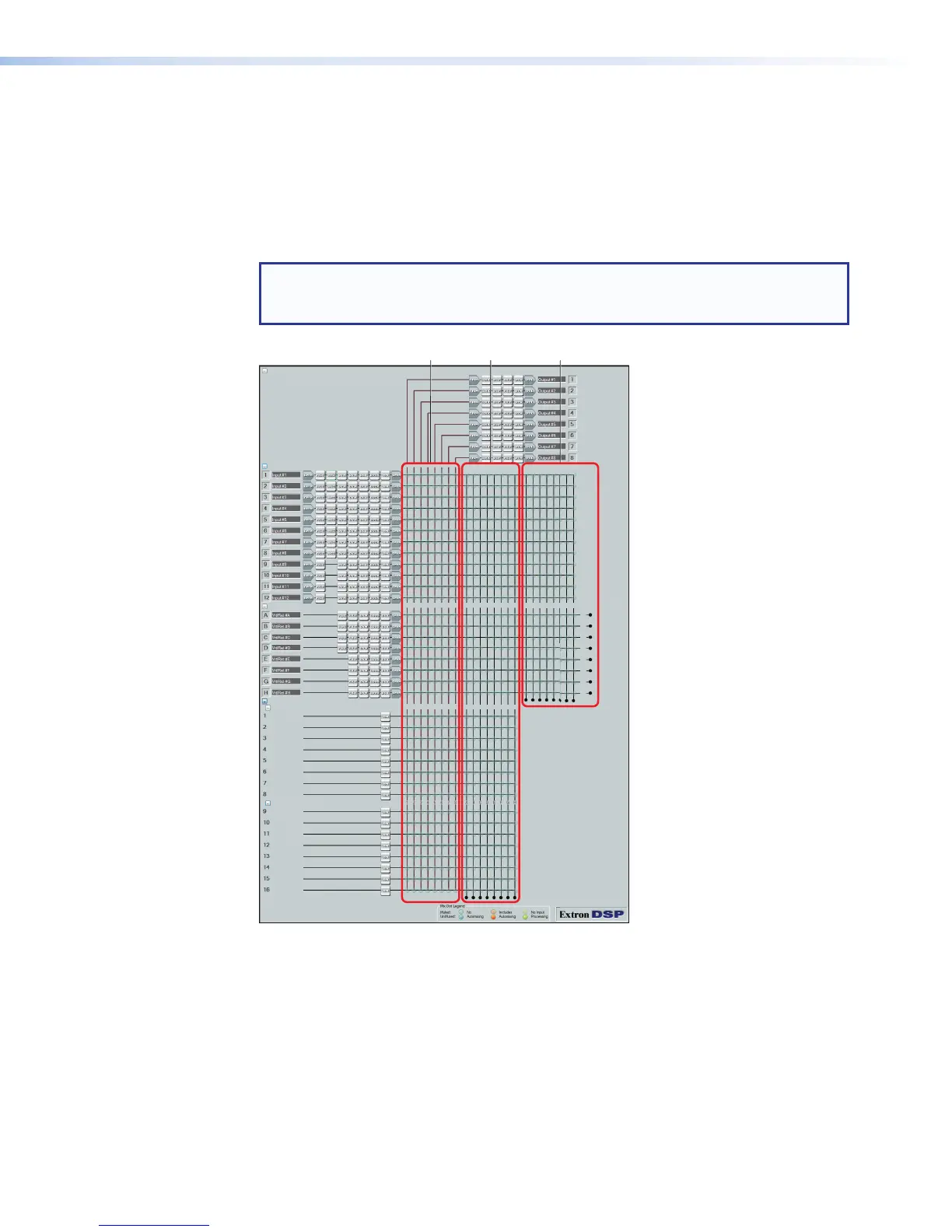DSP SIS Commands for Mix-point Level and Mute Control
Many functions; gain, mute, group masters, mix-points, and a protected configuration can
be controlled using SIS commands. These commands follow the same general rules as
basic SIS commands, but the variables (
X/
) tend to be more complex. Before attempting
SIS control of the DSP, a comprehensive understanding of the audio signal flow is helpful
to understanding the commands. Figure 96 shows the specific DSP functions available for
SIS command control of the mix-points.
NOTE: This supplement refers only to the mix-point and corresponding level and
mute control commands. See DSP SIS Commands on page141 for basic SIS
commands and functions.
Virtual Send Bus Expansion Outputs
1 2
3 4 5 6 7 8
Expansion Outputs
1 2
3
4
5
6
7
8
1 2
3 4 5 6 7 8
A B
C D E
F G
H
1 2
3
4
5
6
7
8
9
10
11
12
13
14
15
16
A B
C D E
F G
H
Inputs
Virtual Returns
Expansion Inputs
Outputs
1 - 8
9 - 16
Mix Matrix
Mix Matrix
Mix Matrix
Figure 96. DSP Processors Addressable via SIS Commands
The Mix Matrix mix-points addressed by this section are:
a
Output Mix Matrix (including level and mute)
b
Virtual Send Mix Matrix (including level and mute)
c
Expansion Output Mix Matrix (including level and mute)
Setting the level of a single mix-point in the mix matrix requires an SIS command that
contains both the mix-point location and level. Making or breaking a connection between
a mix-point input and output requires the mix-point location be unmuted or muted.
DMP128 • Reference Information 170

